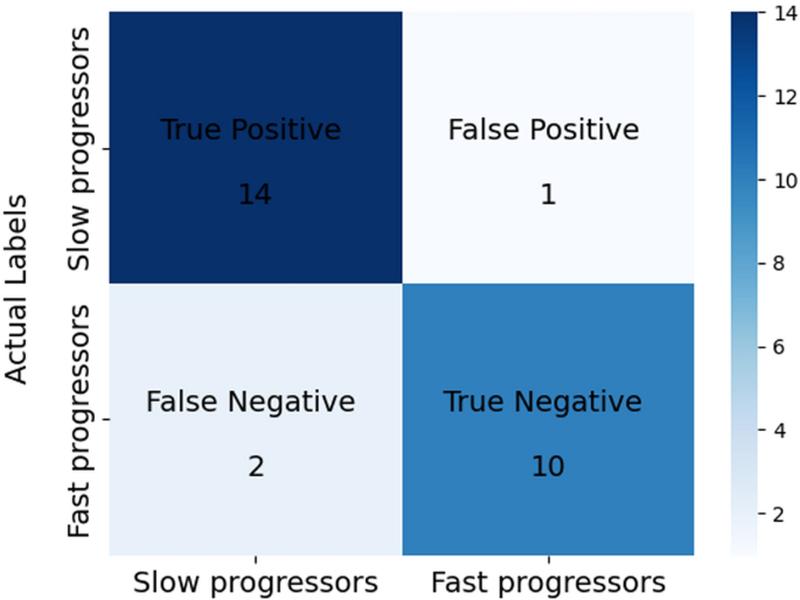This study aimed to develop a structural MRI-based biomarker to predict the long-term changes in motor symptoms of Parkinson’s Disease (PD) patients. The biomarker was based on a patient-specific summary score of gray matter volumetric (GMV) heterogeneity of multiple brain regions using Mahalanobis distance (MD). Additionally, a machine learning technique was used to classify PD patients based on the severity of motor symptoms. Data was obtained from the Parkinson’s Progression Markers Initiative (PPMI) database. Inclusion criteria for the patients included asymmetric resting tremor or asymmetric bradykinesia or two of resting tremor, bradykinesia, and rigidity. Exclusion criteria included a diagnosis of dementia or atypical PD syndromes, significant neurologic or psychiatric conditions, and the presence of MRI motion artifacts, field distortions, intensity inhomogeneities, or detectable brain injuries. Motor symptoms were assessed using Part III of the Movement Disorder Society-Sponsored Revision of the Unified Parkinson’s Disease Rating Scale (MDS-UPDRS).

